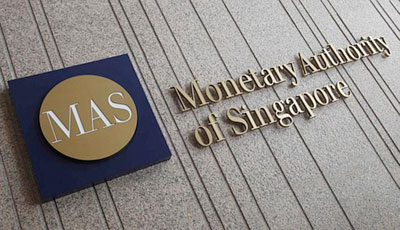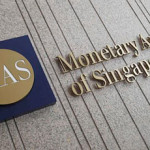MAS Monetary Policy Statement

- Since the last Monetary Policy Statement in October, developments in the global and domestic inflation environment have led to a significant shift in Singapore’s CPI inflation outlook for 2015. As part of its ongoing economic surveillance, MAS has assessed that it is appropriate to adjust the prevailing monetary policy stance.
2. In October 2014, MAS maintained a modest and gradual appreciation path of the S$NEER (Singapore dollar nominal effective exchange rate) policy band, with no change to its slope, width, and the level at which it was centred. This policy stance, which has been in place since April 2012, was assessed to be appropriate for containing domestic and imported sources of inflation and for anchoring inflation expectations.

3. Over the last three months, the S$NEER has generally fluctuated around the middle of the policy band. The depreciation of the S$ against the broad-based strength of the US dollar was partly offset by the appreciation of the S$ against the Malaysian ringgit, euro, and Japanese yen. Thus, movements in the S$NEER have been relatively muted compared to bilateral S$ movements against the major currencies. The three-month S$ SIBOR increased slightly from 0.41% at end-September 2014 to 0.46% at end-December. It rose further to 0.65% in mid-January 2015, and has since stayed at around this level.
OUTLOOK FOR 2015
Growth
4. The global economy continues to grow at an uneven pace across countries, with stronger growth in the US partly offset by weakness in the Eurozone, Japan, and China. Even as some Asian economies benefit from the US recovery and the mild upturn in the global IT industry, other regional economies face weaker commodity exports.
5. Against this backdrop, the Singapore economy grew more slowly, by 1.6% in Q4 2014 on a quarter-on-quarter, seasonally-adjusted annualised basis, or about half the pace of expansion in Q3 Looking ahead, the mixed outlook for the global economy will continue to weigh on the external-oriented sectors while the domestic-oriented sectors should stay broadly resilient. The 2015 growth forecast for the Singapore economy remains at 2–4%.
Inflation
6. However, the outlook for inflation has shifted significantly since the last Monetary Policy Statement in October 2014, largely due to the decline in global oil prices.
7. In October 2014, MAS Core Inflation was projected to pick up gradually into early 2015 before easing in the second half of the year, and CPI-All Items inflation was expected to stay subdued in late 2014 and throughout 2015. Since then, global oil prices have fallen sharply, amid significant increases in supply and weaker prospects for global demand. The West Texas Intermediate (WTI) benchmark has declined by around 50% from US$91 per barrel at end-September 2014 to below US$50 per barrel in late January 2015. The fall in global oil prices resulted in overall import prices declining by an average of 6.5% y-o-y in Oct–Nov 2014, the steepest correction since Q3 2009.
8. While the underlying cost pressures stemming from a tight labour market have remained, the pass-through to consumer prices has to date been slightly weaker than anticipated. At the same time, enhanced medical subsidies, including those under the Pioneer Generation Package, have led to a one-off reduction in the prices of healthcare services. Consequently, inflation has declined in recent months. MAS Core Inflation moderated to 1.6% y-o-y in Q4 2014 from 2.1% in Q3, while CPI-All Items inflation fell to -0.1% from 0.9%.
9. Going forward, MAS Core Inflation and CPI-All Items inflation are expected to ease further, before rising in H2 with some recovery in global oil prices and in view of the base effects associated with the low inflation in Q4 2014. For 2015 as a whole, global oil prices are unlikely to show a significant rebound and should remain much lower than the US$93 average recorded last year. At the same time, the extent to which businesses will pass on accumulated costs to consumer prices could be somewhat constrained in the near term by the moderate economic growth environment. Car prices and imputed rentals on owner-occupied accommodation will also continue to dampen overall inflationary pressures amid the increase in the supply of COEs and newly-completed housing units.
10. Taking these developments into account, MAS is revising its inflation forecasts for 2015. CPI-All Items inflation is now projected to come in at -0.5–0.5%, from the 0.5–1.5% expected in October. Meanwhile, MAS Core Inflation is expected to be 0.5–1.5% this year, down from the earlier forecast range of 2–3%
MONETARY POLICY
11. The Singapore economy remains on track to grow at a moderate pace of 2–4% in 2015. However, MAS is reducing its forecasts for CPI-All Items inflation and MAS Core Inflation for 2015. Imported inflationary pressures are receding, with global oil prices likely to stay subdued this year. While domestic cost pressures will remain, the pass-through to consumer prices is expected to be moderate.
12. MAS will therefore continue with the policy of a modest and gradual appreciation of the S$NEER policy band. However, the slope of the policy band will be reduced, with no change to its width and the level at which it is centred. This measured adjustment to the policy stance is consistent with the more benign inflation outlook in 2015 and appropriate for ensuring medium-term price stability in the economy.
13. MAS will continue to be vigilant over developments in the external environment and their impact on the domestic economy, and stands ready to curb sharp movements in the S$NEER.
Source: Monetary Authority of Singapore – MAS Monetary Policy Statement


























